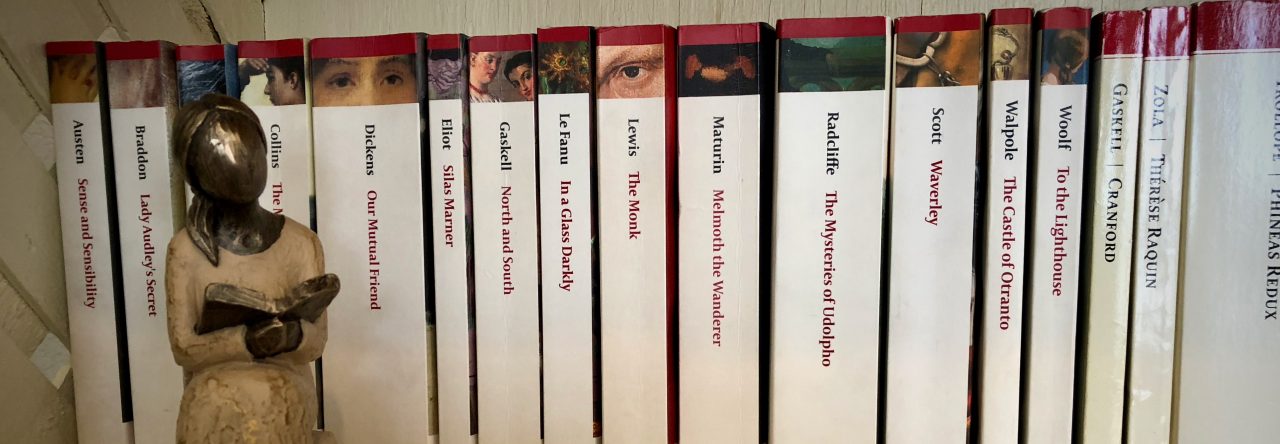
In the 18th century, poetry was king. This seems strange to us now, because to the modern eye 18th c. poetry looks incredibly dull and stiff. We have the Romantics to thank for that; more about them later.
Poetry was the default literary form of the 18th c. Poets wrote verses to commemorate public occasions, to praise potential patrons, to tell stories, to satirize cultural norms–basically anything. In America, at least (and I think in England also), you would often see broadsides (single sheets of paper) printed with verses to draw a moral lesson from an execution. Poetry wasn’t something for the elite, but was available to all classes. And all classes participated in the making of verses, too. While Pope was, even at the beginning of his career, a true talent, and while England and America had their fair share of professional or semi-professional poets, ordinary people frequently wrote poetry for fun. Some of what survives is terrible, but some of it is actually pretty good. Even people who were illiterate could participate. by hearing others read or recite poetry, and by making up their own verses to recite.
It is true that 18th c. poetry tends to be very formal; it is written in a “high” style with archaic words and often borrows its forms from classical (e.g. Ancient Greek and Latin) styles. But, as I have come to learn, these features are often only a superficial barrier to encountering some incredibly skilled and subtle versifying.
For example, in Alexander Pope’s 1711 poem “Essay on Criticism” (which, by the way, manages to get in some very good and hilarious digs at critics), Pope writes,
"Tis not enough no harshness gives offense; The sound must seem an echo to the sense. Soft is the strain when zephyr gently blows, And the smooth stream in smoother numbers flows; But when loud surges lash the sounding shore, the hoarse rough verse should like the torrent roar. When Ajax strives some rock's vast weight to throw, The line too labors, and the words move slow"
Ok, so we note the iambic aa bb rhyme scheme, which to our ears sounds repetitive, even plodding, and perhaps you feel like he over-does it on the description. But some careful attention shows that Pope literally does what he argues poetry should do–his “sound…echo[es]… the sense.” He uses gentle “s” sounds and round vowels in the next two lines, which are supposed to be “soft.” The following lines use stronger consonants to make the lines “roar.” And when the line should “labor,” he actually alters the metrical pattern to make the line plod.
While I have come around to 18th c. poetry since initially disliking it, I’ll admit that I just don’t understand the popularity of some 18th c. poems. For example, James Thompson’s long poem The Seasons (1740) was massively, enormously popular. It was widely read, and widely excerpted for anthologies and the like. I find it incredibly tedious. But that doesn’t necessarily mean it’s bad, just that the people of the 18th century engaged with poetry in a way that is very foreign to me.
This is because of the Romantic movement, which began in the 1790s. Romanticism stripped a lot of the formalism out of poetry, making it more loose, more emotional, more individual. Poets started writing about their feelings and experiences (see: Shelley’s “Ode to the West Wind” or Wordsworth’s “Tintern Abbey”) instead of about public occasions or outside topics (like “Essay on Criticism”). Romantic poetry did still engage with public topics — Shelley wrote a number of poems about politics, for example– but it was so profoundly different in style and feel that we, living in a poetic world still essentially Romantic, struggle to engage with 18th c. poetry. Of course, the switch didn’t just magically occur in one particular year; you can see pre-Romantic ideas and styles earlier, and 18th c. forms later. This is a very broad and over-simplified description; perhaps I’ll do a later post comparing 18th c. and Romantic poetry more thoroughly later.
If you’re interested in tackling some 18th century poets, here are some suggestions:
Alexander Pope: Y’all, he’s good. Pick a poem that sounds fun and dive in. Slow, careful reading is rewarding
James Granger: wrote a fascinating 4-part long poem about sugar cane called, shockingly The Sugar Cane. Book IV is particularly interesting in that it engages with the question of slavery (you could skip the other books no problem, unless you want to learn a lot about sugar cane).
Phyllis Wheatley: an American slave, later freed, who was something of a prodigy. Her poems are lyric poems, which means they tend to be short, too.
William Blake: Blake is kind of an intermediate poet, often taught as a precursor to the Romantics. His lyric poems in Songs of Innocence and Songs of Experience are very memorable.
I mean, yeah, you could look up James Thompson if you want to. Prepare to read a lot about sheep.

